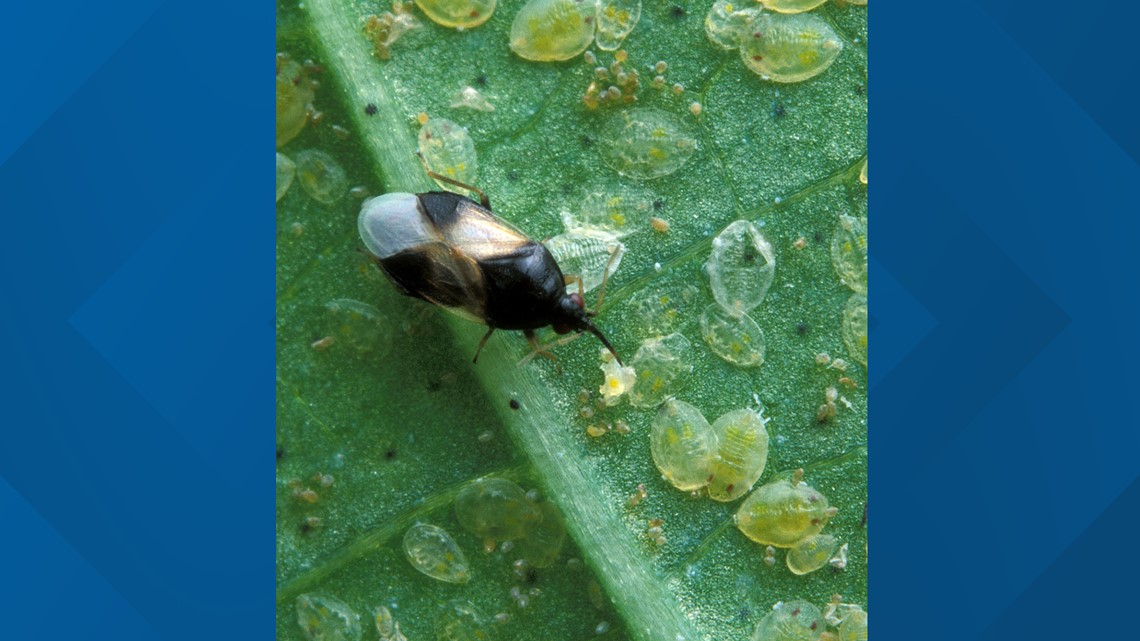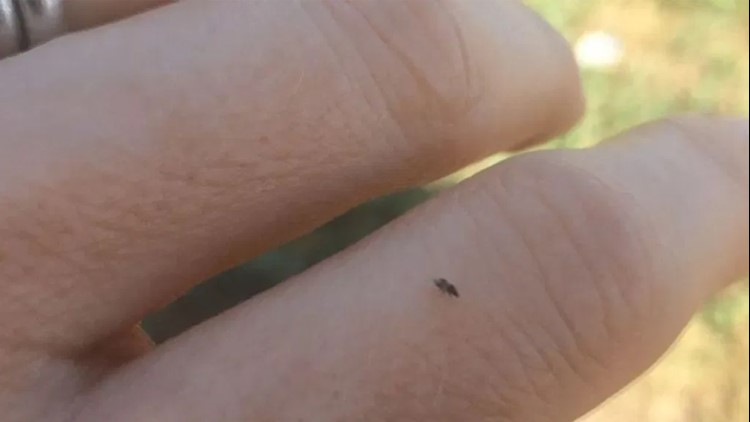MOLINE, Ill — Do you enjoy early fall walks outside on warm, sunny days? You are not alone! On that walk, you suddenly find yourself being poked and prodded by these tiny little gnat-looking insects. So small, they look like tiny pieces of pepper flakes. Their bite is annoying and seems to be a big deal considering their size. So, what are these little buggers and how can you avoid them?
Introducing the Minute Pirate (Flower) Bug
No larger than 1/8-inch in length, these tiny biters are quite efficient at evading detection until you've already been bitten. They are black in color with a gold patch across the back and white tips on their wings. They feed on a variety of other insects throughout the warm season and are actually quite beneficial in terms of pest control by limiting the number of other pests in fields and even gardens, too!
The surprisingly painful bite
How does something so tiny pack such an impressive bite? Easy! They land on exposed skin and use their short, blunt mouthparts to probe and puncture our skin. Unlike mosquitos, they do not feed on our blood, nor do they inject us with anything, such as saliva or venom. Instead, our body reacts with our natural immune response to any foreign body trying to enter, creating itchy welts or areas of redness near the bite location. The bugs do not carry disease and it is very rare that any medical attention would be needed from a bite.


So, if they are not feeding off of us, why are we being bitten?
Minute Pirate Bugs take advantage of warm, sunny fall days to get in one last search for food before winter sets in. Insect population drops and flowers also wither in the fall, meaning these insects are limited when it comes to food choices. So, they fly around, poking around different things, including us, in search of food.
How to avoid them
Currently, there are no insect repellents that really have any noticeable impact on keeping these tiny biters away from our skin. One thing you can take advantage of is the time of day. These bugs don't like cool weather. They also don't like cloudy days, either. According to the Iowa State University Extension, light colors also seem to attract the bugs. They suggest wearing dark-colored clothing with long sleeves to limit the amount of exposed skin if possible.
Once the temperature pattern turns colder, the biting activity of these tiny bugs will slow down dramatically until next fall.



